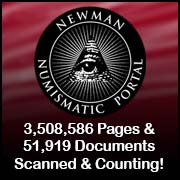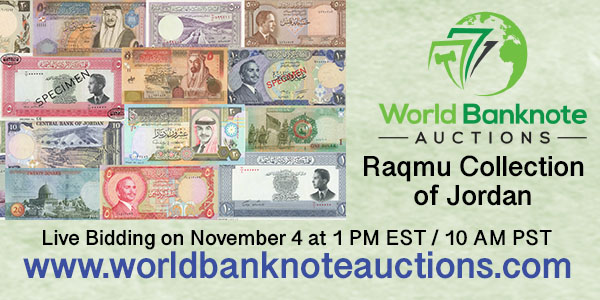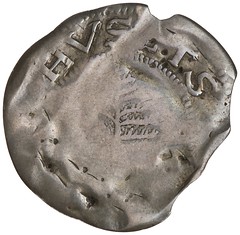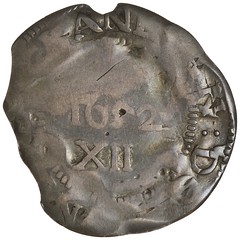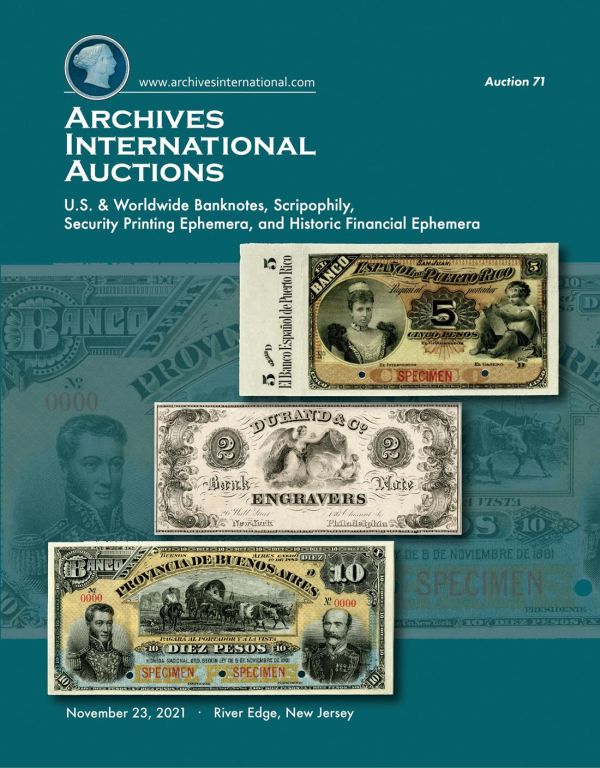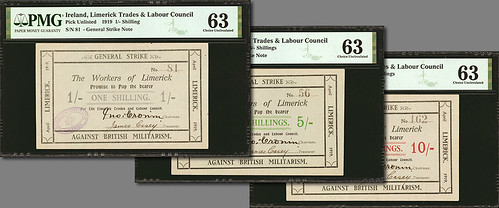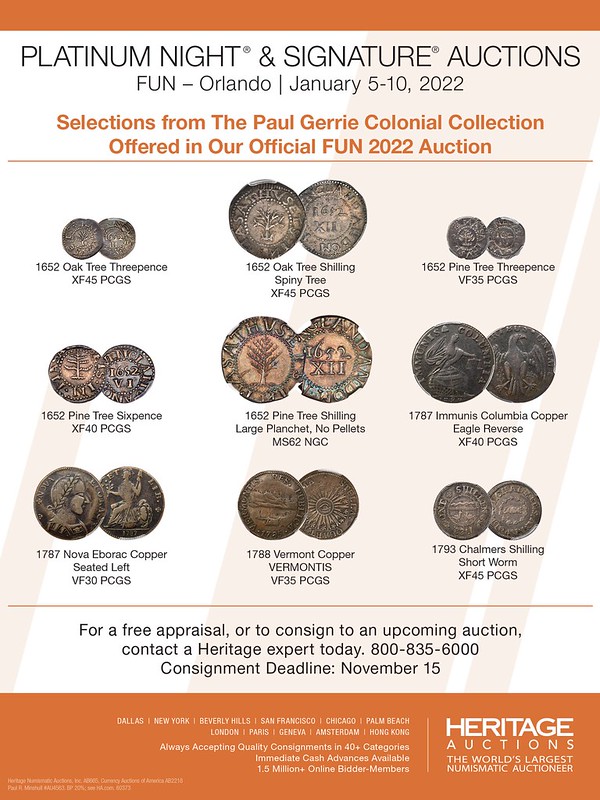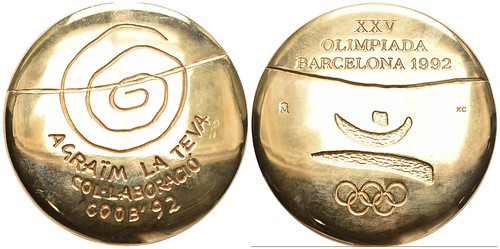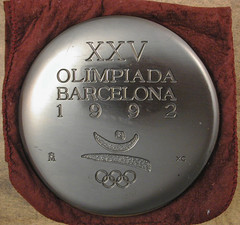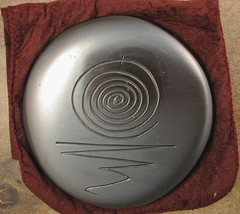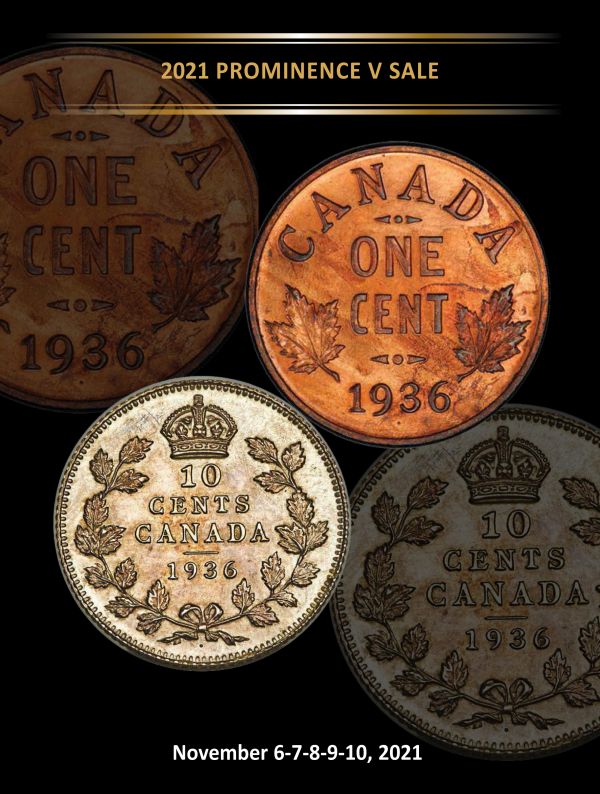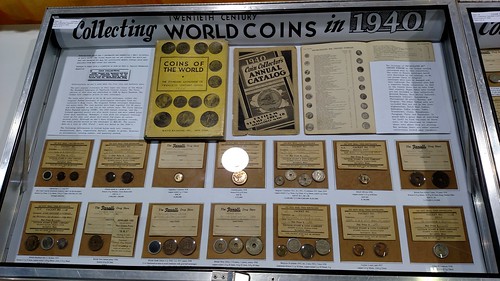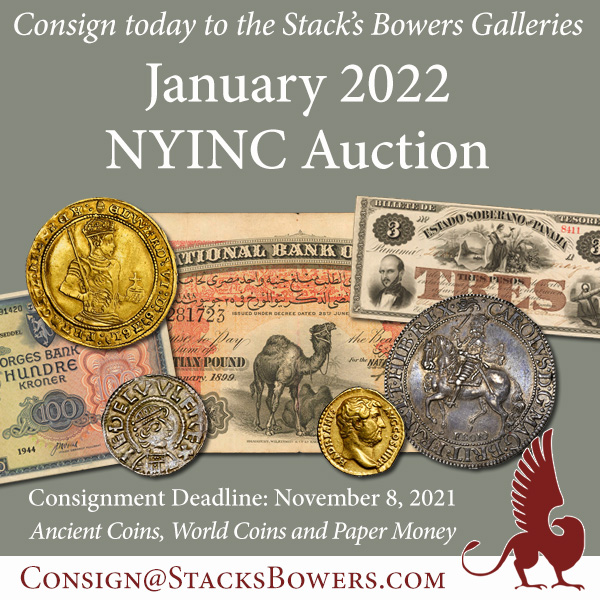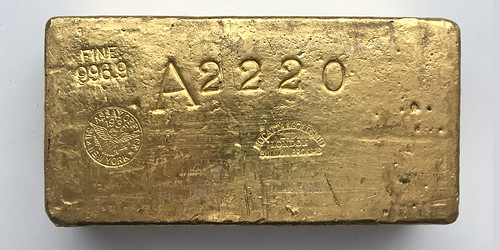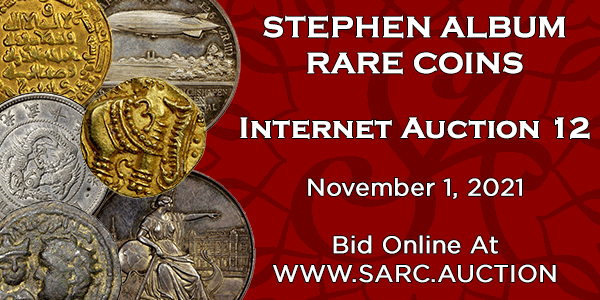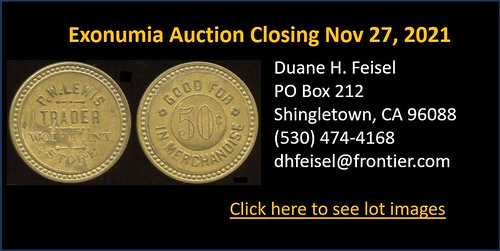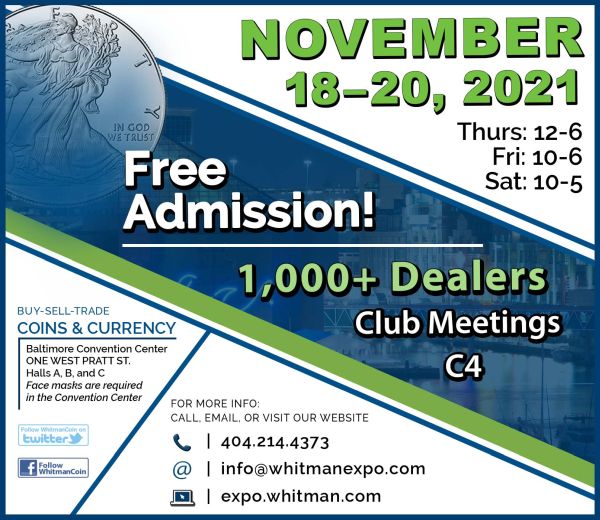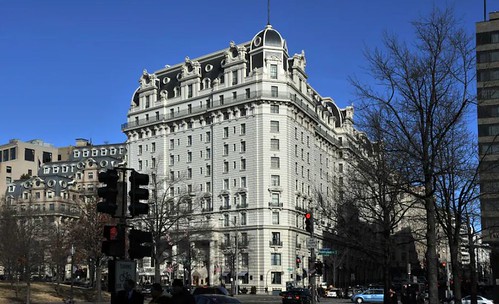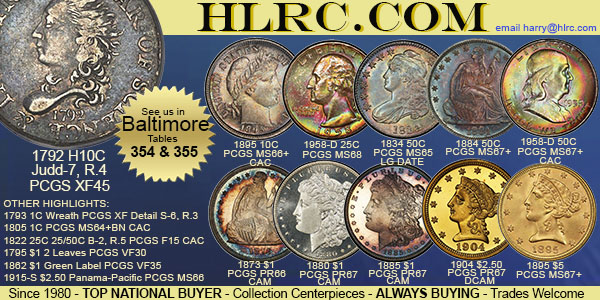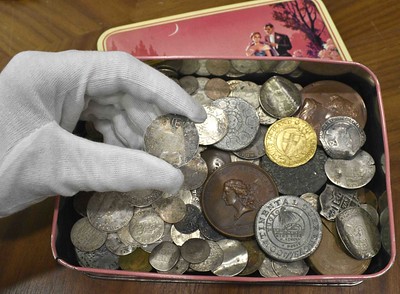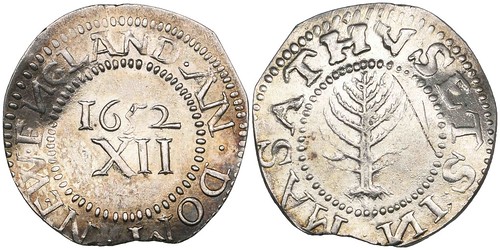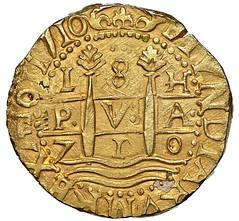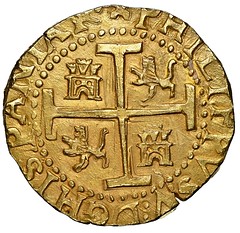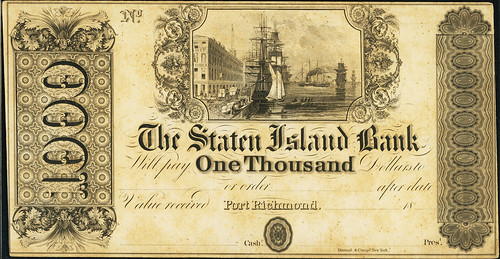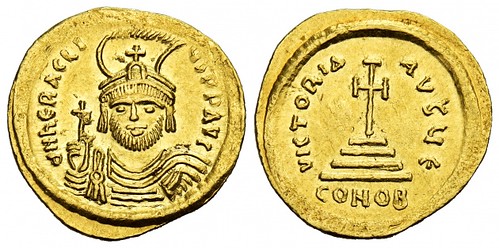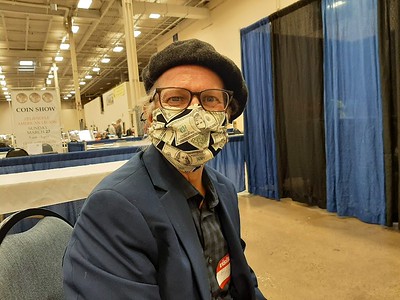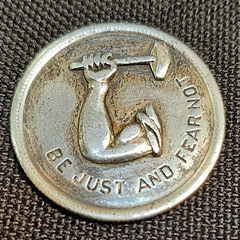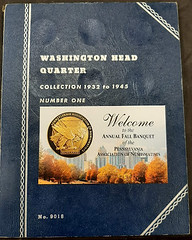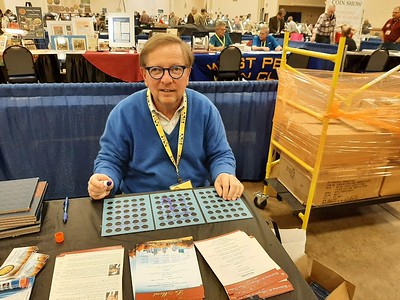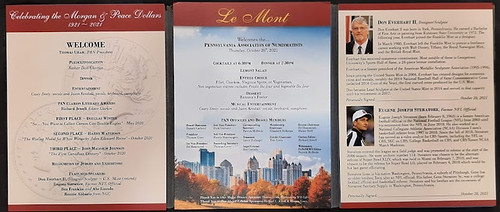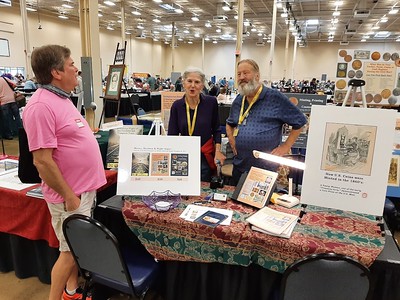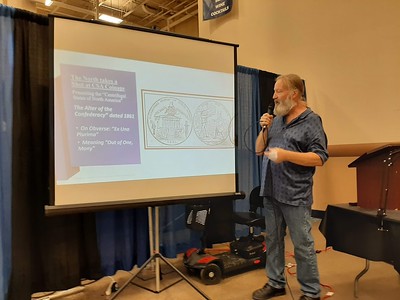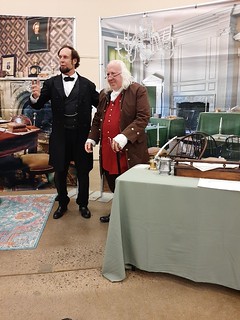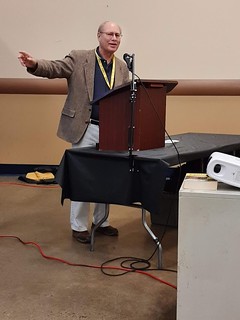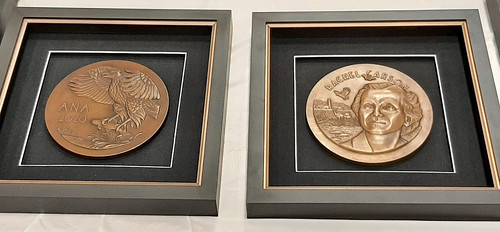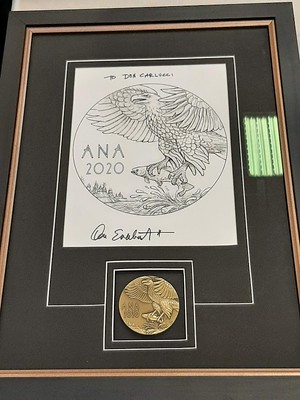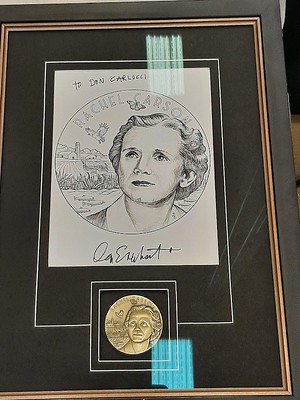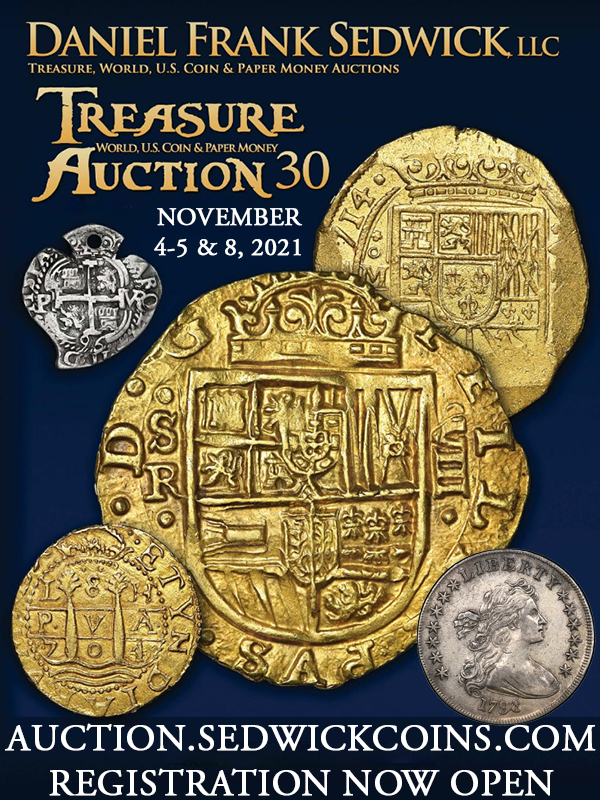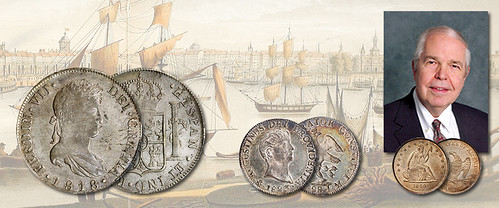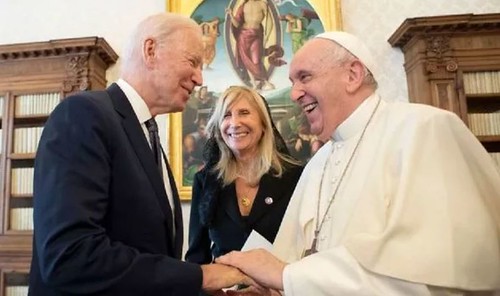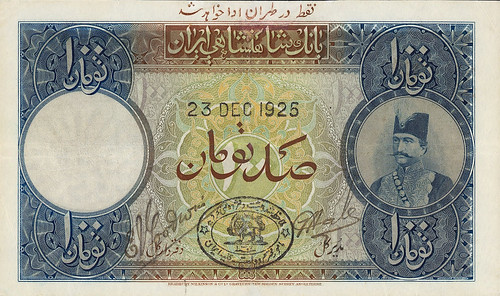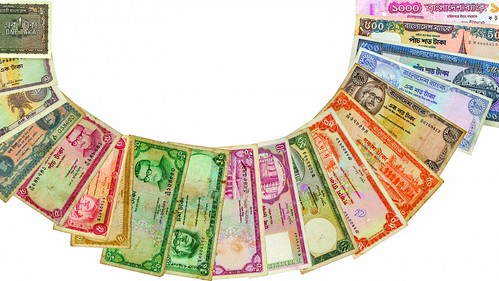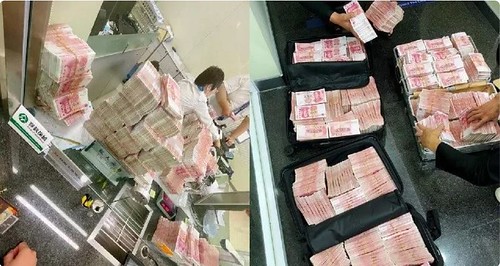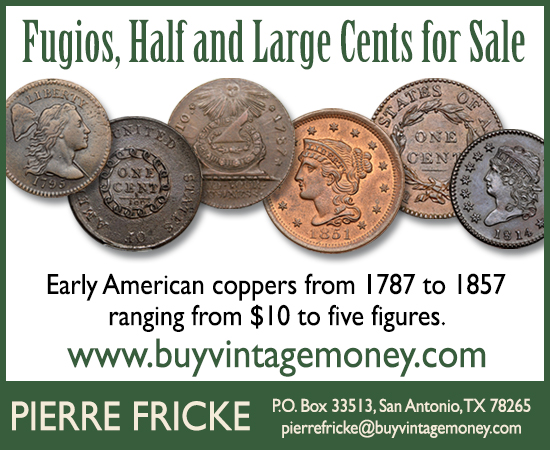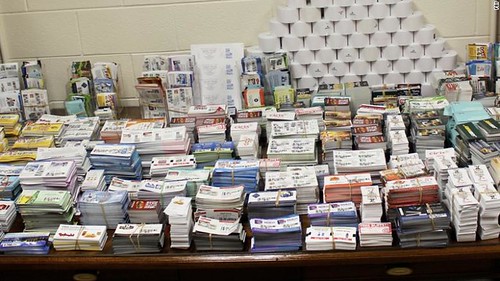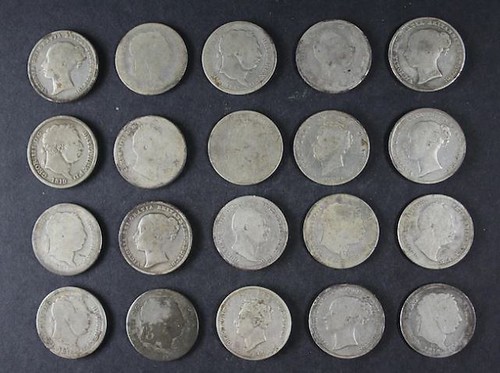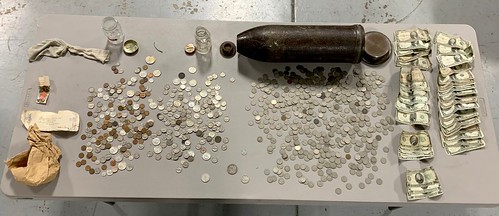
Visit our NBS Sponsors


About UsThe Numismatic Bibliomania Society is a non-profit association devoted to the study and enjoyment of numismatic literature. For more information please see our web site at coinbooks.org SubscriptionsThose wishing to become new E-Sylum subscribers (or wishing to Unsubscribe) can go to the following web page link MembershipThere is a membership application available on the web site Membership Application To join, print the application and return it with your check to the address printed on the application. Print/Digital membership is $40 to addresses in the U.S., and $60 elsewhere. A digital-only membership is available for $25. For those without web access, write to: Charles Heck, Treasurer AsylumFor Asylum mailing address changes and other membership questions, contact Chuck at this email address: treasurer@coinbooks.org SubmissionsTo submit items for publication in The E-Sylum, write to the Editor at this address: whomren@gmail.com BUY THE BOOK BEFORE THE COINSale CalendarWatch here for updates! |
- WAYNE'S WORDS: THE E-SYLUM OCTOBER 31, 2021
- NEWMAN PORTAL: BENT COIN SUPERSTITION
- VIDEO: THE 2022 CENTRAL STATES SHOW
- OCTOBER 2021 NNP SYMPOSIUM VIDEOS POSTED
- BRITISH MUSEUM HOLDS BOGGS OLD BAILEY NOTE
- MORE ON THE 1919 IRISH LIMERICK SOVIET NOTES
- MORE ON 1992 BARCELONA OLYMPICS MEDALS
- NOTES FROM E-SYLUM READERS: OCTOBER 31, 2021
- HORNBY ISLAND COIN ART
- U.S. ASSAY OFFICE AT NEW YORK GOLD INGOT
- VOCABULARY TERM: FREE-STANDING MEDAL
- WILLIAM AND ROBERT IDLER
- GREENBACKS AND THE WILLARD HOTEL
- MORE ON THE MORTON & EDEN SWEET TIN COINS
- SEDWICK NOVEMBER 2021 AUCTION 30 SELECTIONS
- SELECTIONS FROM HERITAGE TALLENT COLLECTION
- NUMISMATIC NUGGETS: OCTOBER 31, 2021
- WAYNE'S NUMISMATIC DIARY: OCTOBER 31, 2021
- MEDIEVAL COIN FIND IN UPPER AUSTRIA
- 1982 NEW ORLEANS COIN HOARD DISCOVERY
- BIDEN GIVES POPE FRANCIS A CHALLENGE COIN
- THE IMPERIAL BANK OF PERSIA
- THE EVOLUTION OF BANGLADESHI BANKNOTES
- CHINESE MILLIONAIRE WITHDRAWS CASH
- COUNTERFEIT COUPON CAPER
- NORTH KOREANS USING CASH COUPONS
- CONVICT COIN STASH FOUND AT PORT ARTHUR
- AMMUNITION ROUND FILLED WITH MONEY
- LADY GAGA'S $100 BILL BOA
Click here to read the thin version on the web
Click here to subscribe
Click here to access the complete archive
To comment or submit articles, reply to whomren@gmail.com
Content presented in The E-Sylum is not necessarily researched or independently fact-checked, and views expressed do not necessarily represent those of the Numismatic Bibliomania Society.
WAYNE'S WORDS: THE E-SYLUM OCTOBER 31, 2021
 New subscribers this week include:
Amandeep Jassal and
Mitch Fraas.
Welcome aboard! We now have 6,731 subscribers.
New subscribers this week include:
Amandeep Jassal and
Mitch Fraas.
Welcome aboard! We now have 6,731 subscribers.
Thank you for reading The E-Sylum. If you enjoy it, please send me the email addresses of friends you think may enjoy it as well and I'll send them a subscription. Contact me at whomren@gmail.com anytime regarding your subscription, or questions, comments or suggestions about our content.
This week we open with updates from the Newman Numismatic Portal and the estate of J.S.G. Boggs, reader comments and more.
Other topics this week include the PAN and Central States shows, coin art, gold ingots, free-standing medals, William Idler, the Willard hotel, auction previews, coin finds, banknotes of Persia and Bangladesh, coupon capers, coin stashes, and a big bill boa.
To learn more about numismatic superstitions, the British Museum, Irish Limerick Soviet notes, Barcelona Olympic medals, the Cat and Mouse medal, $50 gold patterns, Greenback deprecation, the Libertas Americana medal, Admiral Vernon medals, the Dollar Bank of Pittsburgh, Don Everhart, and the New Orleans coin hoard free-for-all, read on. Have a great week, everyone!
Wayne Homren
Editor, The E-Sylum
NEWMAN PORTAL: BENT COIN SUPERSTITION
Newman Numismatic Portal Project Coordinator Len Augsburger provided this Halloween-inspired report. Thanks. -Editor
Numismatic Superstition
VIDEO: THE 2022 CENTRAL STATES SHOW
These are selections from the David Lisot Video Library that feature news and personalities from the world of coin collecting. David has been attending coin conventions since 1972 and began videotaping in 1985. The Newman Numismatic Portal now lists all David's videos on their website at:
https://nnp.wustl.edu/library/multimediadetail/522852
Here's one on the planned 2022 Central States show. -Editor
Larry Shepherd Gives Update on Central States Numismatic Society Convention
Scheduled April 27-30, 2022.
VIDEO: 5:30.
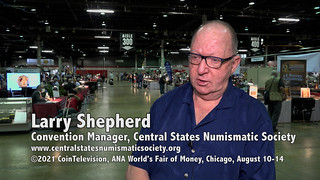 Larry Shepherd, Convention Manager, Central States Numismatic Society,
Larry Shepherd, Convention Manager, Central States Numismatic Society,
David Lisot, Interviewer, CoinTelevision.com.
Larry Shepherd is the new convention manager for the Central States Numismatic Society annual coin convention. The convention has not been held since 2019 due to the COVID Pandemic. The next show is scheduled for April 2022. Larry talks about what collectors and dealers may expect from the upcoming convention.
An excerpt of the video is available for viewing on the Coin Television YouTube Channel at:
https://youtu.be/Nh9khmA-asA
OCTOBER 2021 NNP SYMPOSIUM VIDEOS POSTED
Newman Numismatic Portal Project Coordinator Len Augsburger provided this update on the recent NNP Symposium. Thanks. -Editor
NNP Symposium Video Posted
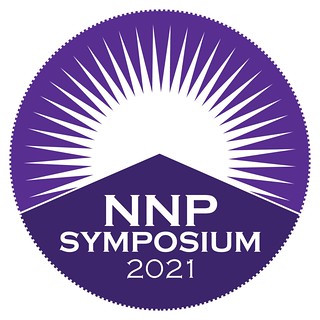 Videos from the recently concluded NNP Symposium (October 15-17) are now posted on Newman Portal. Produced by Lianna Spurrier of Numismatic Marketing, this online event featured a total of 27 speakers presenting on a wide variety of numismatic topics.
Videos from the recently concluded NNP Symposium (October 15-17) are now posted on Newman Portal. Produced by Lianna Spurrier of Numismatic Marketing, this online event featured a total of 27 speakers presenting on a wide variety of numismatic topics.
Among the most viewed presentations were Ellen Feingold and Jennifer Gloede speaking on the National Numismatic Collection. This session included the premier of a 20-minute video, produced by Newman Portal, on the United States coins in the National Numismatic Collection. Note, the videos for David Lange and Bob Van Ryzin are still in post-production and will be released shortly. Many thanks to all our presenters, and we are looking forward to our next event in spring 2022.
Link to NNP Symposium videos, October 15-17:
https://nnp.wustl.edu/library/multimediadetail/539070?Year=2021&take=50
THE BOOK BAZARRE
BRITISH MUSEUM HOLDS BOGGS OLD BAILEY NOTE
Editing The E-Sylum puts me in a position to be able to connect numismatists from around the world. Recently I helped Tom Hockenhull of the British Museum get in touch with Craig Whitford, who is working with the estate of our friend Money Artist J.S.G. Boggs. Tom had been researching whether or not a Boggs work was indeed in the museum's collection. This fact had been referenced in many published works, but neither Craig nor I had been able to confirm it with the BM. Boggs had been arrested and put on trial in London for counterfeiting because his artwork resembled current banknotes. He was ultimately exonerated.
Craig sent me this piece of good news. Thanks! -Editor
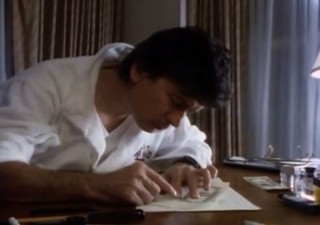 For over 30 years (!) the British Museum has had in their possession one of Boggs' 5 pound notes that was an exhibit in the trial at Old Bailey.
For over 30 years (!) the British Museum has had in their possession one of Boggs' 5 pound notes that was an exhibit in the trial at Old Bailey.
For some reason Boggs never completed the donation paperwork or it was mislaid so very long ago. I assisted Tom with informing the estate of its existence and the importance of it remaining at the British Museum. The estate signed the donation paperwork making it a permanent part of their collection.
Tom will be placing it on permanent exhibit as well as writing an article for the British Museum Magazine in the near future. He also let me know that in about six weeks it'll be added to their online inventory. By searching British Museum Boggs
you'll be able to find it.
MORE ON THE 1919 IRISH LIMERICK SOVIET NOTES
Author Jonathan Callaway submitted these corrections on the 1919 Irish Limerick Soviet notes. Thank you! -Editor
The piece on the three Limerick Soviet notes was very interesting. The ultimate fate of these notes was not however as described by Stacks-Bowers. The notes were not confiscated and destroyed by the British Military
nor were they treated as contraband
.
The summary as set out in the text of my forthcoming second edition of Paper Money of Ireland
is as follows, with the key point highlighted:
MORE ON 1992 BARCELONA OLYMPICS MEDALS
Eric Holcomb writes:
"The Olympia Barcelona 1992 copper medal shown in the current E-Sylum (from a Swiss auction) may be the so-called Catalan
version of the official participation medal (see attached photos of the official medal). The break on the obverse and reverse of the Catalan version presumably represents the desire of some residents of Catalonia to separate from Spain.
"The official medals are the same large size (70 mm, weight about 254 grams) and were presented in a maroon pouch (not a box) made of imitation leather. XC is the initials of the designer, Xavier Corbero."
Thanks! For assistance I reached out to Robert Hoge who kindly provided this transcription and translation of the inscription. -Editor
The obverse reads AGRAÏM LA TEVA/ COL.LABORACIÓ/ COOB '92. COOB would be the abbreviated version, I guess, of Comitè de Organisació Olímpica de Barcelona (1992). In Spanish/Castilian, formally and officially, the COOB would apparently be rendered as COMITÉ ORGANIZADOR DE LOS JUEGOS DE LA XXV OLIMPIADA BARCELONA 1992. Barcelona was awarded the games in 1986, right after Spain entered the EU, and the Committee must have begun its activities shortly thereafter.
For the reverse, the inscription can be read and interpreted equally in Spanish (that is to say "Castilian", as Catalans prefer; they've informed me that as a language, the adjective "Spanish" does not exist) and Catalan, XXV/ OLIMPIADA/ BARCELONA 1992. Formally or technically, OLIMPIADA should be rendered as OLIMPÍADA, with the acute accent above the second I (as "Í"), but presumably they did not consider this to be crucial.
"We appreciate your/ cooperation/ Barcelona Olympic Organizing Committee" (COOB is the abbreviation for the Barcelona Olympic Organizing Committee) on the obverse and "25th/ Olympiad/ Barcelona 1992" on the reverse. The tiny "M" mark with a crown over it is the mark of the Madrid mint, the Casa de la Moneda (officially, in full, the Fábrica Nacional de Moneda y Timbre); the small "XC" mark is that of the artist's initials -- for Xavier Corberó, as already stated by Eric Holcomb.
This medal is apparently the official commemorative issue that was presented to volunteers who assisted in the preparation and coordination of the events. In all, there were 16 different commemorative medals for the games. They evidently share a very similar reverse design, that of the actual statement of the occasion, the name of the games. I am not sure which one is represented by Mr. Holcomb, but the commemorative/participation medals varied greatly in their obverse themes, it seems -- mostly images relating to the city of Barcelona, which undertook major transformations of itself through the entire project of hosting the games and has since become the principal tourist destination in all of Europe, I have read.
The central logo above the traditional five Olympic rings is supposed to represent a stylized human being as a dynamic figure in an athletic stance, designed by the Catalan artist Josep Maria Trias.
This medal from the auction was specifically distributed in appreciation to volunteers. As you are probably already well aware, the Olympic games always have several different official medals. The best known are the victors' award medals, the Gold, silver and bronze versions presented for first, second and third place standings in each of the athletic competition events. Then there are always commemorative and/or participation medals, which are much more variable.
Thank you! -Editor
Robert adds:
"It is interesting to think that the "break" shown on the AGRAÏM (Catalan) side of the medal can be interpreted as an independentista sentiment. I doubt that Sr. Samaranch (who insisted upon being addressed as "Your excellency") was a supporter of the separatist movement, but who knows?!"
Eric adds:
"I should have looked at the book first! Olympic Medals and Coins, 510 B.C. – 1994, by Victor Gadoury (published 1994), lists both versions of the medal along with the winners' medal. My version is described as the Official Medal of the Participants, Spanish version
(mintage 40,000) whereas the other one is the Official Medal of the Participants, Catalan version
(mintage 55,000). Although Gadoury doesn't say so, it's likely that the Catalan version was primarily awarded to volunteers rather than athletes and officials."
For more information, see:
Barcelona 1992 Olympic Official Commemorative Medals
(https://en.wikipedia.org/wiki/Barcelona_1992_Olympic_Official_Commemorative_Medals)
To read the earlier E-Sylum article, see:
OLYMPIC MEDALS IN MUENZENONLINE AUCTION 16 : Lot 33: Barcelona 1992
(https://www.coinbooks.org/v24/esylum_v24n43a25.html)
NOTES FROM E-SYLUM READERS: OCTOBER 31, 2021
Tatham Stamp & Coin Company Envelopes
"I've been reading with interest the recent explorations of Dealer Coin Envelopes.
I have a bit to add to the coverage that has been offered up to this point.
"Some years ago, as I recall it was at the ANA National Money Show in Portland, I observed the display of a collection of coins that had ben acquired from the Tatham Stamp & Coin Company back in the early post-WWII years . . . complete with the envelopes the coins had been marketed in . . . that had been mounted by Gawain O'Connor. Chatting with Gawain as I was admiring the presentation, I offered that I would be interested in acquiring the collection if he ever determined to let go of it.
"A couple years later Gawain contacted me to inquire if my offer was still good . . . which I affirmed . . . so the collection became mine. I have subsequently exhibited it, non-competitively, on perhaps as many as a half-dozen occasions . . . Central States, Michigan State and PAN seem to come readily to mind . . . over a period of a couple years . . . several years ago.. Guess I should drag the exhibit out and share it some more one of these days.
"My interest in acquiring the collection stemmed from the fact that my very first numismatic acquisition was a selection of approval offerings from Tatham, back in 1950, so the envelopes were readily recognizable . . . but I hadn't saved any of them at the time . . . thus the motivation for a nostalgic acquisition."
Great story. This is the fun of collecting! -Editor
To read the earlier E-Sylum articles, see:
WAYNE'S NUMISMATIC DIARY: AUGUST 16, 2015
(https://www.coinbooks.org/esylum_v18n33a15.html)
MORE ON DEALER COIN ENVELOPES
(https://www.coinbooks.org/v24/esylum_v24n43a09.html)
Other topics this week include Maryland dealer William Bromley, and the Colonel Green Estate in Miami Beach. -Editor
HORNBY ISLAND COIN ART
Jim Bulmer of Hornby Island in British Columbia, Canada, passed along these photos of his coin art. Thanks. -Editor
I bought $1500 in U.S. change from an Island Friend, and this year (Covid-Hobbies) I glued them all to plywood and painted them, and this is how they turned out.
Cents through dollar coins, and some large Tokens and Pins, Gorilla Glue, and Tremclad paint on plywood. They sit near the road in the trees, they're pretty heavy.
U.S. ASSAY OFFICE AT NEW YORK GOLD INGOT
Paul Horner writes:
"A gold ingot from the NY assay office that weighs 402 ounces! For Sale through Stack Bowers!"
Wow! I'll order two and use them for bookends... Here's some information from the SBG email. -Editor
VOCABULARY TERM: FREE-STANDING MEDAL
Here's another entry from Dick Johnson's Encyclopedia of Coin and Medal Terminology. -Editor
Free-Standing A medallic item which has a base broad enough to support the item standing on edge. Both medals and medallic objects have been issued with such an integral function. Robert Weinman's 1987 Society of Medalists issue number 115, his Cat and Mouse, will stand upright, as an example of such a medal. A medallic object, one of many, is Roy Lichtenstein's 1969 Salute to Airmail.
WILLIAM AND ROBERT IDLER
American Numismatic Biographies author Pete Smith submitted this article on dealer William Idler and his son Robert. Thanks! -Editor
William Idler (1808-1901)
William Idler was born in North Carolina on June 25, 1808, the son of Jacob Idler (1773-1856) and Sophia (1781- 1869). He married Rosanna Kelley (1821-1897). Their children were Jacob (1840-1900), Mary Idler Brown, Rose (1847-1937), William Idler, Jr. (1849-1916) and Robert (1851-1921). In the 1850 Census, the family was in Mount Ulla, North Carolina.
On June 9, 1869, his daughter Rose Amelia Idler, married John W. Haseltine at Clinton Street Presbyterian Church.
He spent fifteen years in South America searching for minerals. In 1858 he opened his store at 111 South Eleventh Street with his house next door at 109 South Eleventh. This was about three blocks east of the Second Philadelphia Mint. In the 1860 Census, his profession was shown as stationer. His trade was originally in mineral specimens and books on geology. This evolved into a jewelry store with coins as a secondary interest.
GREENBACKS AND THE WILLARD HOTEL
The Willard hotel in Washington D.C. has a connection to Greenbacks. Here's the story from the Washington Post. -Editor
For more than 150 years, the Willard hotel, across the street from the White House, has been the site of political wheeling and dealing, international delegations and more than its fair share of intrigue and violence.
Here's a history of the hotel author Nathaniel Hawthorne said more justly could be called the center of Washington than either the Capitol or the White House or the State Department.
MORE ON THE MORTON & EDEN SWEET TIN COINS
Morton & Eden kindly provided this preview draft of the catalogue descriptions for additional interesting "sweet tin" finds to be auctioned on November 26. Thank you. -Editor
U.S.A., Colonial North America, New England, shilling, 1652, large planchet Pine Tree issue, obv., reversed N in IN, without pellets at trunk, rev., reversed N in ENGLAND, 70.60gr. (Noe 9; Salmon 7a-Diii), slightly buckled and scratched in field beside pine tree, otherwise good extremely fine and the variety rare, in NGC holder graded UNC DETAILS OBV SCRATCHED £3,000-4,000
SEDWICK NOVEMBER 2021 AUCTION 30 SELECTIONS
Here's a selection of items that caught my eye in the upcoming Sedwick sale. -Editor
Lima, Peru, cob 8 escudos, 1710 H, four-digit date, HISPANIAR variety, ex-1715 Fleet, NGC UNC details / obverse scratched, Tauler Plate. S-L25a; KM-38.2; Cal-2117. 26.58 grams. This coin is so well centered on a broad, round flan that in 1992 Frank Sedwick called it "exquisite...its excellence of cut and strike and completeness...as close as we have ever seen to a Philip V Lima 8E Royal." Indeed it is striking to see so much full detail, including all the legend, even the second date in four digits, 1710, without any doubling or weakness or even wear, as this coin clearly did not circulate before it was lost to the sea, which imparted an orangish sheen of sediment on the surfaces, in addition to a tiny patch of white coral in the waves, the only manufacturing demerit being a hairline crack at about 1 o'clock / 4 o'clock. As noted, however, the act of salvage or later handling imparted several areas of light scratches, particularly below the denomination on the pillars side and around the upper-left castle on the cross side.
SELECTIONS FROM HERITAGE TALLENT COLLECTION
Here are some lots that caught my eye in the upcoming Heritage sale of the The Michael S. Tallent Collection Part III. -Editor
Port Richmond, NY- Staten Island Bank $1,000 18__ G16 Proof PMG About Uncirculated 55.
An excessively rare Proof on a rare bank in either Proof or issued form and we are not allowing the Proprietary Proofs of this design that were printed by the ABNCo in the 1980s to be a part of this discussion. PMG has graded only one example, and this is it. It is without any POCs and has a regal appearance with its oversized dimensions. Appropriately, a harbor scene is the vignette on this example that exhibits toning. It has a Durand & Compy. New York imprint and is an excellent example of their finest work. This may even be the plate note on page 1749 of the Haxby reference. Simply, a great note and destined for another great collection once all the bids have been executed.
NUMISMATIC NUGGETS: OCTOBER 31, 2021
Here's a selection of interesting or unusual items I came across in the marketplace this week. Tell us what you think of some of these. -Editor
Heraclius, 610-641.
Ô-Solidus, 610/613, Constantinopolis, 5. Offizin; 4.45 g. Gepanzerte Büste v. v. mit Helm und Kreuz//Kreuz auf drei Stufen.
DOC 3 b; Sear 73
From the Keunker eLive Auction 68. -Editor
To read the complete lot description, see:
Heraclius, 610-641. Ô-Solidus, 610/613, Constantinopolis, 5. Offizin; ...
(https://www.kuenker.de/en/elive-auction/stueck/310504)
Other topics this week include a Muhammad Shah Mohur, a WWII German Paratrooper medal, and concentration camp memorial medals. -Editor
WAYNE'S NUMISMATIC DIARY: OCTOBER 31, 2021
Wednesday, October 27, 2021
On Wednesday morning I set off on an excursion to Pittsburgh. My prime purpose was to speak at the Pennsylvania Association of Numismatists (PAN) show on Friday, but I added a couple days to allow for visiting friends, relatives and doing a little sightseeing.
The Banks of Pittsburgh
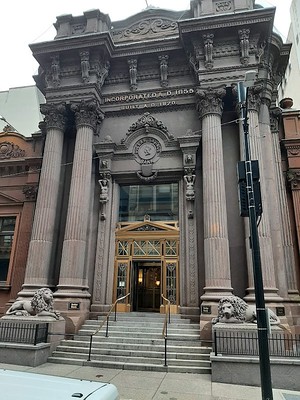 Regarding the sightseeing I made a couple phone calls to confirm my destinations would be available. I was happy to score 2 for 2. I'd been curious about the fate of the classic lobby of the old Union Bank building downtown, where I'd once kept a safe deposit box for my collection. The lobby had high ceilings, an abundance of marble, and of particular numismatic interest, about a dozen 1906 Morgan dollars. Not real ones of course - they don't exist - but large plaster ceiling medallions. The branch was constructed in 1906.
Regarding the sightseeing I made a couple phone calls to confirm my destinations would be available. I was happy to score 2 for 2. I'd been curious about the fate of the classic lobby of the old Union Bank building downtown, where I'd once kept a safe deposit box for my collection. The lobby had high ceilings, an abundance of marble, and of particular numismatic interest, about a dozen 1906 Morgan dollars. Not real ones of course - they don't exist - but large plaster ceiling medallions. The branch was constructed in 1906.
I'd had to move my collection out when the building was sold to a developer. In the years since I'd moved from Pittsburgh, the building was turned into condominiums. I called the sales office and was happy to learn the lobby had been preserved, albeit now occupied by a high-end men's clothing store, Joe Orlando's. After arriving in town and parking my car, I walked to the store and entered through the same revolving glass doors I'd used so often years ago. And the Morgan medallions were still there.
Just up the street in the same block was my second destination - the Dollar Bank building. Founded in 1855 as a bank for ordinary working people, this downtown branch was erected in 1870 and still stands today as a nearly perfectly preserved example of the era's banking architecture. A few years ago the bank restored the stately brownstone lion scuptures, moved them inside and replaced them with exact duplicates. They also created a Heritage Center with museum exhibits of bank documents, photographs, and old-fashioned banking equipment. It's still a working branch and open to the public during normal business hours. Check it out if you're in town. I hope to work with the ANA to plan a tour during the 2023 Pittsburgh World's Fair of Money.
University of Pittsburgh
After lunch I met Garrett Ziss between classes in the Oakland section of the city, where he's a freshman at my alma mater, the University of Pittsburgh. He showed me an impressive bronze gate in the Cathedral of Learning that had been donated by famous local numismatist George Clapp. We had a nice walk around the campus discussing old buildings and new. The place looked very nice.
Thursday, October 28, 2021
Bob Evans
On Thursday afternoon I walked from my hotel over to the PAN Show. The first numismatist I ran into was none other than Bob Evans who had an interesting observation on his entry into numismatics - "I started at the top". While most of us began by pulling coins out of circulation, as the Chief Scientist for the S.S. Central America recovery effort, he began by helping find and pull up from the bottom of the ocean a masssive haul of gold bars, gold dust and coins that had last seen the light of day in 1857 before the ship was lost in a hurricane. I'd enjoyed hearing him speak at the ANA World's Fair of Money in Chicago in August, where he displayed and rang the Central America's ship bell. He was sporting a spiffy money-themed mask.
Be Just and Fear Not
Right up front was the table of E-Sylum sponsors Dave and Melissa Kahn of David Kahn Rare Coins. We talked about the coin business, country auctions, selling on eBay and some neat items in their cases, like this engraved half dollar with the slogan "Be Just and Fear Not."
Tom Uram and the PAN Banquet Programs
Talisman and Coiner
Becky Rush "Talisman" and Rick Lank "The Coiner" of Hagerstown Maryland had a nice table near the lecture area. We had great conversations about their books and numismatics in general. They've got some great ideas about promoting numismatics to the general public and have already succeeded in reaching some of that audience with their books.
Bob Evans and I were in the front row for Rick's presentation.
To read earlier E-Sylum articles, see:
NEW BOOK: MONEY, MAYHEM AND MIGHT
(https://www.coinbooks.org/v22/esylum_v22n34a06.html)
NEW BOOK: THE CONFEDERATE TREASURE TRAIN
(https://www.coinbooks.org/v23/esylum_v23n46a04.html)
NEW BOOK: MINTING PRINTING & COUNTERFEITING
(https://www.coinbooks.org/v24/esylum_v24n21a03.html)
NEW BOOK: SUMPTUOUS SOUTHERN STORIES
(https://www.coinbooks.org/v24/esylum_v24n41a03.html)
Lincoln and Franklin
Channeling Abe Lincoln and Ben Franklin, Dennis Boggs and Patrick McBride performed Two Wars, Two Centuries
. It was excellent, closing with an impressive recitation of the complete Gettysburg Address.
Friday, October 29, 2021
Bill Bierly and Howard Gibbs
The next day I came back in time for Bill Bierly's talk on Creation of the National Motto on Coinage
Right afterwards I gave my own talk on "Howard Gibbs: Prince of Primitive Money" following a short update on the addition of Coin World and Numismatic News to the Newman Numismatic Portal. By the way, David Lisot was on hand recording presentations for NNP, so those unable to attend in person will have the opportunity to see what they missed.
Don Everhart
Retired U.S. Mint Sculptor-Engraver Don Everhart had a table where PAN Chairman of the Board Don Carlucci displayed Everhart's work on the Rachel Carson medal for the ill-fated 2020 Pittsburgh ANA World's Fair of Money.
Short But Sweet
I couldn't stay much longer after giving my talk - time to get on the road back home. I didn't see half the people I would have liked to talk to, but did get to chat at least briefly with
Corleen Chesonis,
Rich Crosby,
Don Carlucci,
Mike Drabick,
Don Everhart,
Dick Gaetano,
Ed Krivoniak,
Larry Korchnak,
Simcha Kuritzky,
Carl Waltz,
Garrett Ziss and others.
Garrett Ziss writes:
"It was my first PAN show and I had a great time. I had a chance to talk with several attendees who I expected to see, as well as quite a few others who were pleasant surprises since they traveled quite a distance to attend the show. I was also able to pick up an 1828 C-3 half cent and an 1838 N-4 large cent (which fits in with our Clapp theme!)."
Great show! Already looking forward to seeing more numismatic friends at next month's Whitman Baltimore Expo (I'll be there for a while Friday afternoon).
MEDIEVAL COIN FIND IN UPPER AUSTRIA
A hoard of some 6,000 medieval coins has been discovered in Upper Austria. -Editor
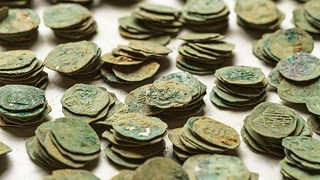 More than 6,000 silver coins from the late Middle Ages were discovered during a renovation project on a farm in the village of Rainbach, Upper Austria.
More than 6,000 silver coins from the late Middle Ages were discovered during a renovation project on a farm in the village of Rainbach, Upper Austria.
The silver coins, which were handed over to the OÖ Lande-Kultur GmbH museum in Upper Austria, also known as Linz Schlossmuseum, were wrapped in fabric and kept in a clay lidded pot,
the museum said.
1982 NEW ORLEANS COIN HOARD DISCOVERY
In his Stack's Bowers blog, Dave Bowers writes about the 1982 discovery of a coin hoard in the New Orleans French Quarter. -Editor
On October 29, 1982, a few minutes past noon, pandemonium prevailed in the French Quarter in downtown New Orleans as earthmoving equipment brought to light a vast treasure of silver coins. The site, scheduled to be used for a new Meridien Hotel, may have secreted a long-forgotten bank reserve.
Passersby grabbed what they could in a frantic free-for-all. In the melee no accounting was ever made of what was found. However, it is estimated that over 1,000 (perhaps well over) silver pieces were found including large numbers of Spanish-American silver coins. Apparently, these had been buried in three cedar boxes. A report of the scramble by James H. Cohen noted: "Visualize, if you will, businessmen in Brooks Brothers suits, women executives dressed in high heels and stockings, and laborers in their work clothes all on their hands and knees in mud, at times up to their waists, digging with their bare hands for buried treasure."
BIDEN GIVES POPE FRANCIS A CHALLENGE COIN
This week President Biden gave Pope Francis a challenge coin and a laugh. -Editor
Mr Biden, who is in Rome for the G20 summit, met with Pope Francis for a marathon 90-minute discussion to talk about the Catholic faith and current affairs before handing the Pope a deeply personal gift in honour of Pope Francis' work and to show Mr Biden's own committment to Catholicism.
Mr Biden said: With your permission I would like to give you a coin.
THE IMPERIAL BANK OF PERSIA
Susan Bremer published an article in the October 27, 2021 Heritage Currency News about the Imperial Bank of Persia and its banknotes. Here's an excerpt. -Editor
The Imperial Bank of Persia, created with the help of two remarkable men, Naser al-Din Shah Qajar and Baron Paul Julius von Reuter, presents a tremendous story for curious numismatic collectors to explore. Before the establishment of the Imperial Bank in 1890, Persia's circulating currency consisted only of gold and silver coins. These two men, the Shah and the Baron, helped create an avenue for the development of paper currency and a banking system monopoly that lasted until 1928.
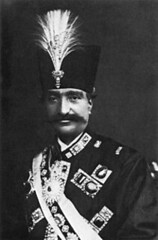 Visionary leader, Naser al-Din Shah Qajar came to power September 5, 1848. Accomplishments during his reign included balancing the country's budget by reforming the tax system, building military factories, opening the first newspaper, and improving relations with world powers to mitigate the British and Russian influence. The Shah became the first ruler of Persia to visit Europe in 1873 and to observe more modern business practices. In an effort for more modernization, Naser al-Din granted unprecedented (and unpopular) concessions to foreigners. This openness to foreign contribution toward the modernization of Persia enabled the creation of the Imperial Bank.
Visionary leader, Naser al-Din Shah Qajar came to power September 5, 1848. Accomplishments during his reign included balancing the country's budget by reforming the tax system, building military factories, opening the first newspaper, and improving relations with world powers to mitigate the British and Russian influence. The Shah became the first ruler of Persia to visit Europe in 1873 and to observe more modern business practices. In an effort for more modernization, Naser al-Din granted unprecedented (and unpopular) concessions to foreigners. This openness to foreign contribution toward the modernization of Persia enabled the creation of the Imperial Bank.
THE EVOLUTION OF BANGLADESHI BANKNOTES
Here's an article on the history of banknotes in Bangladesh. -Editor
Every time the political regime or the governor of the Bangladesh Bank of this country changed, so did our currency notes. Achia Khanom Likhon, the curator of Taka Museum of the capital said, "Money is one language that everyone, whether s/he is educated or not, understands. So currencies are a great medium of communication and that's why we find certain messages and images on the notes."
During our research for this story, we came across an interview where Kazi Golam Mustafa, the designer of our very first currencies and postal stamps, told the interviewer from BTV that he has created art that people carry in their pockets every day.
It made us think, how have these exchangeable paper notes evolved over time? What is the story behind them?
CHINESE MILLIONAIRE WITHDRAWS CASH
A disgruntled bank customer in China began withdrawing a fortune in cash. -Editor
A wealthy Chinese man who was asked to follow pandemic protocols inside a bank in Shanghai responded by threatening to withdraw all his savings.
The man, known only by his social media handle Sunwear
on Weibo, flared up after engaging in an argument with employees of the Bank of Shanghai on Hongmei Road, reported Ladbible.
COUNTERFEIT COUPON CAPER
Paper money isn't the only target of counterfeiters. Here's a tale of coupon counterfeiters from Virginia Beach. -Editor
The FBI is revealing new details about a $31.8 million counterfeit coupon scheme that landed a Virginia Beach couple in prison for nearly 20 years, combined.
In a press release last week, the agency said that investigators found fake coupons in "every crevice" of the house belonging to Lori Ann Talens and her husband, Pacifico Talens, Jr.. The falsified savings were worth more than $1 million. They also found designs for coupons for more than 13,000 products on Lori Ann Talens' computer.
THE BOOK BAZARRE
NORTH KOREANS USING CASH COUPONS
In North Korea the government has resorted to printing coupons in lieu of banknotes. -Editor
Money coupons manufactured by North Korea's Central Bank are proliferating throughout the country, NK News has independently confirmed, as the DPRK's COVID-19 pandemic controls reportedly cause cash printing problems.
An informed source told NK News that the coupons — which photos show come in a 5,000-won denomination, printed with red ink on white paper — have been pumped out due to a shortage of North Korean won bills, confirming past reports on the presence of these coupons on the streets of Pyongyang. Asia Press reported that the coupons began circulating around the end of August.
CONVICT COIN STASH FOUND AT PORT ARTHUR
A dig at a prison site in Port Arthur, Australia yeilded a cache of silver coins likely secreted away by an inmate. Found via The Explorator newsletter. To subscribe to Explorator, send a blank email message to: explorator+subscribe@groups.io. -Editor
Prisoners at historic Port Arthur were not allowed to carry money. So how did a pile of silver shillings worth about a week's salary for one of the penal colony's overseers end up buried beneath the convicts' workshop?
"It's such an evocative find, it's so out of place," said Port Arthur Historic Site Management Authority conservation project officer Sylvana Szydzik.
"We know that convicts occasionally had coins, but that was a pretty substantial amount of money at the time."
The coins were found during a 10-month archaeological dig of the foundry and blacksmith site conducted by University of New England post-doctoral research fellow Richard Tuffin and Ms Szydzik.
The find joins other discoveries such as handmade gambling tokens as well as tobacco pipes and skillfully made metal products.
AMMUNITION ROUND FILLED WITH MONEY
Arthur Shippee passed along this New York Post article about an unusual find of coins and paper money. -Editor
A Michigan family made a bombshell discovery this weekend when they discovered a non-live WWI-era ammunition round was filled with treasure.
The family was cleaning out its house when they came across what they believed to be a live ammunition round and contacted authorities, Michigan State Police said on Twitter.
LADY GAGA'S $100 BILL BOA
If you're looking for a Made-in-the-USA fashion accessory, check out Ladya Gaga's 100 dollar bill boa. -Editor
Lady Gaga picked a particularly luxe look for her private flight to Las Vegas on Tuesday, sharing an Instagram snap of herself wearing a wild wrap made out of $100 bills.
The 35-year-old House of Gucci
star styled her outré accessory with a polka-dotted Magda Butrym dress ($1,300), Valentino cat-eye sunglasses ($449) and a hot pink Hermès Kelly bag ($22,550).
But it was the boa of Benjamins that quickly proved to be the outfit's talking point.
Gaga can you give me that scarf I'm … cold,
one fan joked in the comments, while another wrote, I need some scarfs [sic] like that in my poor life.

